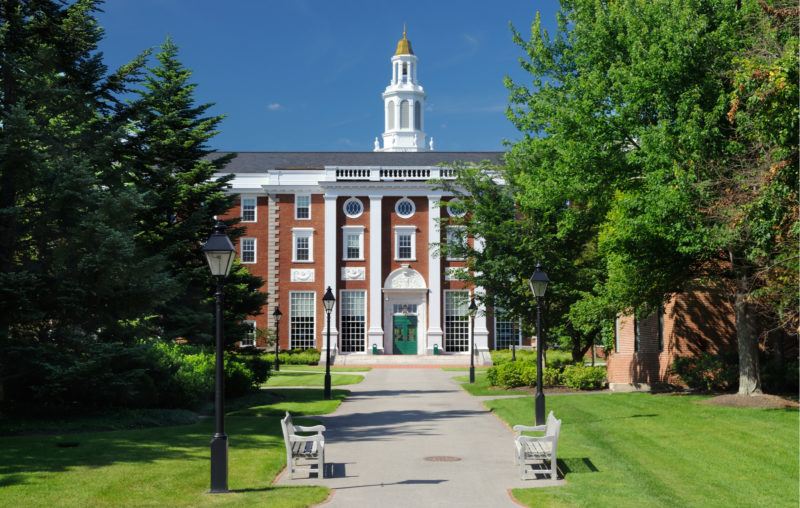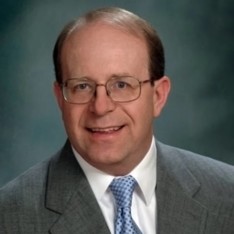The Unintended Disruption of the Ivory Tower

The political left may be about to get a severe lesson in the “law of unintended consequences.” This principle may extend to an unexpected transformation of the radical left’s traditional sanctuary and source of power: higher education.
In recent months, Democrats and their various allies may have overplayed their hand in two major ways. For one, appearances suggest that they deliberately disrupted the strong economy with excessively strict Covid-19 lockdowns in order to prevent a likely win by President Trump in the 2020 election. Furthermore, they have joined hands with Antifa and Black Lives Matter and even encouraged violent anti-police riots. Both these strategies are likely to backfire on them—possibly with major repercussions in the Ivory Tower.
Even before 2020, higher education’s environment appeared to be ripe for upheaval. A common observation is that college has been “oversold” to young people unlikely to benefit financially or intellectually from going to four-year academic institutions. A few years back, there was frequent discussion of the possibility that a higher education “bubble” was building that would inevitably burst in the immediate future, as happened with the “dot-com” bubble in 2000 and the housing bubble in 2008.
Some also felt that academia—which has seen few of the productivity gains from technical advances witnessed in other sectors of the economy—was especially due for technical transformation. There was a huge rush to create online education, both from upstart innovators and from established colleges and universities, in anticipation that the future of higher education was online.
But neither of those possibilities has materialized as expected. Higher education’s unique position in the economy insulates it from both market forces and the growing awareness that college is not for everybody. Since World War II, the ties between the federal government, the corporate world, and academia have increasingly solidified. Economic planners assumed that prosperity could be enhanced by cooperation between the government, the business community, and academia. (This mechanism was sometimes described as the “Triple Helix,” for its resemblance to the way molecules form interlocking structures.)
In this system, government financial aid makes higher education a more attractive option to graduating high school students who might otherwise seek alternate paths, thereby satisfying corporate America’s demand for more educated workers at no cost to itself. At the same time, corporate America continues to pump up demand for higher education by using the college degree as a screening device for employment. In return for government’s financial support, both academia and the corporate world push pro-big government perspectives.
This system has served academia well, allowing it to maintain relatively high levels of enrollment despite economic downturns and a slightly smaller college-age generation. Employers continue a preference for hiring graduates, and even the massive accumulation of student debt has not significantly slowed the tendency to attend a four-year academic college.
Furthermore, the specific processes of higher education do not lend themselves to technical change as easily as in other industries and institutions. The art of high-level teaching—explaining difficult concepts—is most efficient in person; a teacher can explain a hard-to-understand concept face-to-face in far less time than it takes to do so by typing emails. Because of such shortcomings, until recently, online education was vastly inferior to its classroom counterpart.
But the resistance to innovation in higher education may not last much longer, thanks in a large part to the Democrats’ response to Covid-19. Entire universities are going entirely online; enough change is being forced upon higher education—and society in general—to set the disruption process in motion; it may even snowball into permanent change.
For one thing, the economic downturn and riots are changing major lifestyle patterns. There is already considerable flight from cities and larger towns into the farther-out suburbs and rural areas. The number of apartment vacancies in Manhattan—hard hit by both the economic slowdown and the riots—increased 85 percent from 2019 to 2020, reaching record levels. At the same time, new housing starts nationally beat expectations by over 20 percent in July—almost all of it in rural and suburban areas.
Likely accompanying this flight will be significant changes in attitudes. People are being shaken out of their homogeneously liberal urban bubbles and exposed to new perspectives in their new communities. And the riots are awakening many people to, not just the unhinged violence of the radical left, but the way that academia has contributed mightily to the radical left’s resurgence. That is, much of the ideology behind the riots was created in academia, then spread to students and recent graduates who make up a considerable percentage of the rioters.
The flight to the country and new political awareness are merging with tech-driven developments. The business community has been growing more distributed and less centralized for some time, with more people working from remote locations over the Internet. This trend is especially conducive to the flight from urban centers. Now, not only are businesses fleeing cities, many are closing their offices and letting their entire staff work from home.
The same phenomenon has developed more slowly in higher education. Recent technical advances already common in the corporate world were less frequently used for college teaching before the pandemic. But with the need to go online, advanced conferencing tools such as Zoom have been pressed into service to simulate in-class experiences. Video conferencing is still not as good as the in-class experience; the best that can be hoped for is that the teaching experience will be nearly as good as their classroom equivalents. Such tools also have problems of scale; a Zoom class with 20 students may work fairly well, but larger classes can be difficult to manage.
However, the decrease in educational quality using Zoom is not so great that it will be completely rejected once a return to campus is possible. People are learning that they can get an adequate education without actually being on campus. Some may wish to return to campus, but others may not. College becomes more affordable without room, board, and campus fees. Students may not get the full “college experience,” but in many cases that may be a good thing. College might no longer be a “four-year party” (or five or six) for millions of disengaged students; many less-than-studious students who were attracted by academia’s social atmosphere may opt for more sensible starts to adult life than assuming huge debt for little return from the job market after they leave campus.
Additionally, parents of college students may no longer be able to exist in an “out of sight, out of mind” state of ignorance about higher education’s negative effects. With their college-age children at home, they may be forced to see exactly what passes for knowledge today. It is not hard to see decreased interest in many academic disciplines resulting from such awareness.
Often, people remain in old patterns even if these patterns no longer make sense—at least until events force them to adopt new ways. There were financial and technical reasons for higher education to change—but they were not enough; some additional motivation was required. Now, the political left appears to have provided that extra impetus: the combined effects of this year’s economic disruption and the political violence.
This is not to suggest that Harvard will close its doors, or that Purdue will cease its research operations. The biggest effects will occur at higher education’s margins—and among those who are the most forward-looking. That may be enough to permanently change the academic landscape. Whatever innovations and changes arise from the current chaos, it is very likely that higher education will not look the same as it did before 2020. Given current intellectual trends that elevate social justice above the pursuit of truth and higher education’s tremendous waste of resources (including the economy-crushing delay of adulthood), that may be for the best.










